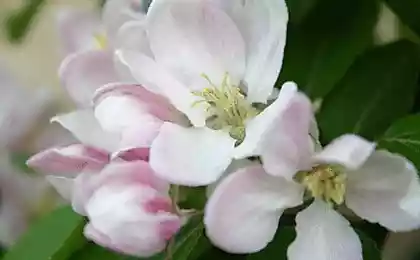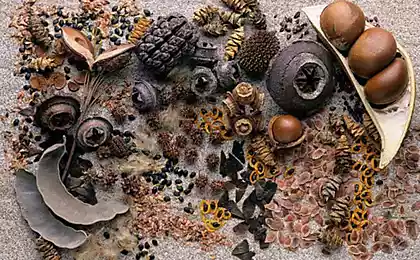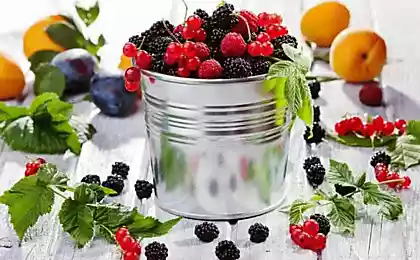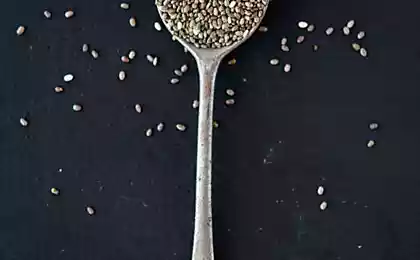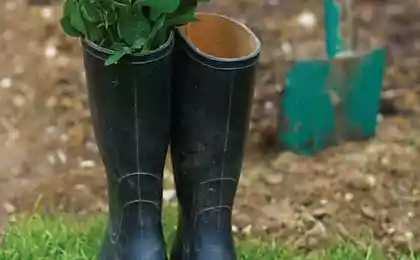591
How to prepare for sowing stone fruit and pome
I. V. Michurin wrote, " ... in the body of each seed, in a state of rest, i.e. in dry form, the process of life does not stop, is constant, though slow metabolism, life-sustaining germ cells. And correct for such exchanges is entirely dependent on the conditions of the environment in which the seed is until sprouting from his plant. The exchange process may be faster or slow down...".
Most growers believe that harvesting the seeds and seeds produced according to the principle:
ripped, eaten, spat out.
Elite varietal seeds are about the forwarding method in the forest under the ancient trees.
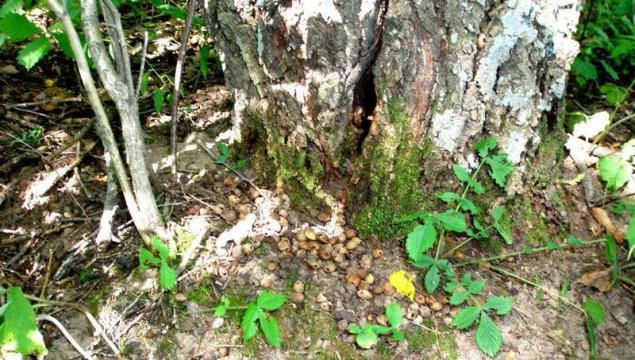
The collected fruits are carried out of the forest and in the boxes stand for a certain time until the moment of decay of the pulp.

Manually on the screens and the rattling of the bones freed from the flesh

and thoroughly rinsed with clean, running cold water.

After a short drying the seeds down for half an hour to the red solution of potassium permanganate for disinfection,

and then thoroughly rinsed with warm running water and sink for 20 minutes in a two percent solution of boric acid and again thoroughly washed. Wet seeds are mixed with dry sand and within 20-30 minutes ground (scarification),

then laid out into small city seeds dried for 2-3 weeks outdoors protected from the sun.

This process of harvesting of seeds for storage ends. When storing the seeds do not get power from outside, and use a ready supply of nutrients accumulated by the parent plant and are designed to power future new plants.
The main objective in storing seeds is to save them from the loss of supply of nutrients, preserving seed germination.
When storing the important role played by such factors as oxygen and water, the seed of intense breathing, releasing carbon dioxide. Of the container in which the seeds are stored must not be hermetically closed.
The viability of seed is maintained only at a certain temperature. You must know that at a temperature of 55-65 degrees is the coagulation of proteins and the cell dies. The optimum temperature for seed storage of stone and pome species was temperature from 0 to +5 degrees.
Crop seeds kept at the temperature from +3 to +8 degrees. It is advisable to store only in the CALCINED, PURIFIED sand, not peat, foam, foam rubber and other achievements of civilization. Prolonged improper storage, due to evaporation of moisture of seeds decreases their weight.
Seeds of various species of plants, even in ideal storage conditions retain their vitality for a long time unequally. For example, the fruit of the hazel and walnut — throughout the year, legumes for 7-10 years, stone — up to 5 years. Fresh seeds have the highest germination.
An important role in seed storage is humidity. Moisture there is mold and the smell of alcohol, these seeds rapidly lose their germination and are killed in three or four months of such storage. The relative humidity in the vault (in the basement) should be maintained between 50-70%. For example, seeds of apricot with a dense shell 120 days storage with an initial moisture content of 12% and a humidity of 75%, absorbed only 1.5% of water, with 87% relative humidity — almost 5%. If the temperature in the storage location falls between -2 to -10 degrees, especially in an open container at 65% humidity seeds are killed.
To speed up seed germination to obtain sprouts they need to be subjected to pre-sowing treatment. Seeds soaked in water or moistened sand until, until they are afoot.
In case of detection of fungus, seeds need to etch. Stone is soaked in water with temperature +30+35 degrees for 2 - 2.5 hours, preferably subjected to constant barbetti, that is, the air flow through the living water in which you soaked the seeds. The majority of seed sinks to the bottom of the vessel, only after this they are laid in layers of moist calcined sand, and the appearance of seedlings is planted.
Planting stratified seed produced in very moist soil to a depth of 3cm. a Very large stone fruit (peach, nectarine, plum) are scarification – mechanical effects, in which the shell is erased or scratched, and then facilitated the access of air to the embryo.

Thus all the seeds must undergo a rest (forced and deep). Deep peace seeds organized by stratification, i.e. the long maintaining them at low temperatures.
Different plants have different periods of stratification. For example, the apricot and filbert, a temperature of +1-4,5 degrees for 3-4 months. The nuts of the Manchurian calcined stratified in moist sand before planting at the temperature of 0 5 degrees. Without stratification are sown later, in one to two weeks before frost.
The seeds of stone-fruit species can be sown in autumn without stratification, or laid on stratification after pre-treatment: to Siberia in the beginning of January, Primorye — 20 Jan.
Duration stratification for individual types of stone the following:
Cherry steppe stratifitsirovannoi immediately after collection, seeds must be sown in the autumn. The thick shell of the seed endocare serves as mechanical barriers to germination. The best temperature for germination is +18 to+27 degrees. At low temperature the fit is desirable to mulch the wet sheet and cover lutrasilom. Irrigation with warm water is carried through were lutrasil.
Accelerated methods of stratification 15-20 days do not provide high seed germination. Seeds of wild Manchurian apricot germinate within four years, this protective adaptation of the species to survive.

The seeds of pome fruit species (Apple wild, Chinese, Anthrax and pear Amur) it is desirable to stratify in the sifted peat. From a cold location in winter, the seeds are made over three or four days in a warm room with the temperature +18+20 degrees. Poured on the burlap is mixed, increasing air access to the seeds. This technique increases energy of germination. Then the seeds incubated at a temperature of+ 3 to+5 degrees with the subsequent terms:
During stratification, the seeds should not dry out and not freeze.
Gardeners to buy seeds safely lay them on the stratification all together, not taking into account the timing of stratification. The timing of stratification in all species of stone and pome fruits different.published
Author: Brodsky, Yu.
Also interesting: How to grow cherries and plums from green cuttings
The SECRETS known to gardeners: how to rejuvenate old garden correctly
Source: www.xn--90aaffrdhgf3abczq.xn--p1ai/publ/khranenie_i_podgotovka_k_posevu_kostochkovykh_i_semechkovykh/1-1-0-77
Most growers believe that harvesting the seeds and seeds produced according to the principle:
ripped, eaten, spat out.
Elite varietal seeds are about the forwarding method in the forest under the ancient trees.

The collected fruits are carried out of the forest and in the boxes stand for a certain time until the moment of decay of the pulp.

Manually on the screens and the rattling of the bones freed from the flesh

and thoroughly rinsed with clean, running cold water.

After a short drying the seeds down for half an hour to the red solution of potassium permanganate for disinfection,

and then thoroughly rinsed with warm running water and sink for 20 minutes in a two percent solution of boric acid and again thoroughly washed. Wet seeds are mixed with dry sand and within 20-30 minutes ground (scarification),

then laid out into small city seeds dried for 2-3 weeks outdoors protected from the sun.

This process of harvesting of seeds for storage ends. When storing the seeds do not get power from outside, and use a ready supply of nutrients accumulated by the parent plant and are designed to power future new plants.
The main objective in storing seeds is to save them from the loss of supply of nutrients, preserving seed germination.
When storing the important role played by such factors as oxygen and water, the seed of intense breathing, releasing carbon dioxide. Of the container in which the seeds are stored must not be hermetically closed.
The viability of seed is maintained only at a certain temperature. You must know that at a temperature of 55-65 degrees is the coagulation of proteins and the cell dies. The optimum temperature for seed storage of stone and pome species was temperature from 0 to +5 degrees.
Crop seeds kept at the temperature from +3 to +8 degrees. It is advisable to store only in the CALCINED, PURIFIED sand, not peat, foam, foam rubber and other achievements of civilization. Prolonged improper storage, due to evaporation of moisture of seeds decreases their weight.
Seeds of various species of plants, even in ideal storage conditions retain their vitality for a long time unequally. For example, the fruit of the hazel and walnut — throughout the year, legumes for 7-10 years, stone — up to 5 years. Fresh seeds have the highest germination.
An important role in seed storage is humidity. Moisture there is mold and the smell of alcohol, these seeds rapidly lose their germination and are killed in three or four months of such storage. The relative humidity in the vault (in the basement) should be maintained between 50-70%. For example, seeds of apricot with a dense shell 120 days storage with an initial moisture content of 12% and a humidity of 75%, absorbed only 1.5% of water, with 87% relative humidity — almost 5%. If the temperature in the storage location falls between -2 to -10 degrees, especially in an open container at 65% humidity seeds are killed.
To speed up seed germination to obtain sprouts they need to be subjected to pre-sowing treatment. Seeds soaked in water or moistened sand until, until they are afoot.
In case of detection of fungus, seeds need to etch. Stone is soaked in water with temperature +30+35 degrees for 2 - 2.5 hours, preferably subjected to constant barbetti, that is, the air flow through the living water in which you soaked the seeds. The majority of seed sinks to the bottom of the vessel, only after this they are laid in layers of moist calcined sand, and the appearance of seedlings is planted.
Planting stratified seed produced in very moist soil to a depth of 3cm. a Very large stone fruit (peach, nectarine, plum) are scarification – mechanical effects, in which the shell is erased or scratched, and then facilitated the access of air to the embryo.

Thus all the seeds must undergo a rest (forced and deep). Deep peace seeds organized by stratification, i.e. the long maintaining them at low temperatures.
Different plants have different periods of stratification. For example, the apricot and filbert, a temperature of +1-4,5 degrees for 3-4 months. The nuts of the Manchurian calcined stratified in moist sand before planting at the temperature of 0 5 degrees. Without stratification are sown later, in one to two weeks before frost.
The seeds of stone-fruit species can be sown in autumn without stratification, or laid on stratification after pre-treatment: to Siberia in the beginning of January, Primorye — 20 Jan.
Duration stratification for individual types of stone the following:
- An ordinary apricot — 80-90 days.
- The Manchurian apricot is 55-60 days.
- Plums and prunes — 120-150 days
- Cherry — 100-120 days
- The turn of 150-170 days.
- Cherry felt — 160-170 days.
- Cherry steppe 120 to 160 days.
Cherry steppe stratifitsirovannoi immediately after collection, seeds must be sown in the autumn. The thick shell of the seed endocare serves as mechanical barriers to germination. The best temperature for germination is +18 to+27 degrees. At low temperature the fit is desirable to mulch the wet sheet and cover lutrasilom. Irrigation with warm water is carried through were lutrasil.
Accelerated methods of stratification 15-20 days do not provide high seed germination. Seeds of wild Manchurian apricot germinate within four years, this protective adaptation of the species to survive.

The seeds of pome fruit species (Apple wild, Chinese, Anthrax and pear Amur) it is desirable to stratify in the sifted peat. From a cold location in winter, the seeds are made over three or four days in a warm room with the temperature +18+20 degrees. Poured on the burlap is mixed, increasing air access to the seeds. This technique increases energy of germination. Then the seeds incubated at a temperature of+ 3 to+5 degrees with the subsequent terms:
- Apple Chinese — 70 days
- the Siberian Apple tree — 30 days
- pear polyculture — 90 days
- pear, Ussuri — 60 days.
During stratification, the seeds should not dry out and not freeze.
Gardeners to buy seeds safely lay them on the stratification all together, not taking into account the timing of stratification. The timing of stratification in all species of stone and pome fruits different.published
Author: Brodsky, Yu.
Also interesting: How to grow cherries and plums from green cuttings
The SECRETS known to gardeners: how to rejuvenate old garden correctly
Source: www.xn--90aaffrdhgf3abczq.xn--p1ai/publ/khranenie_i_podgotovka_k_posevu_kostochkovykh_i_semechkovykh/1-1-0-77
10 things about my mom, who still need to tell the child
Gravity creates lamp powered by the force of gravity
